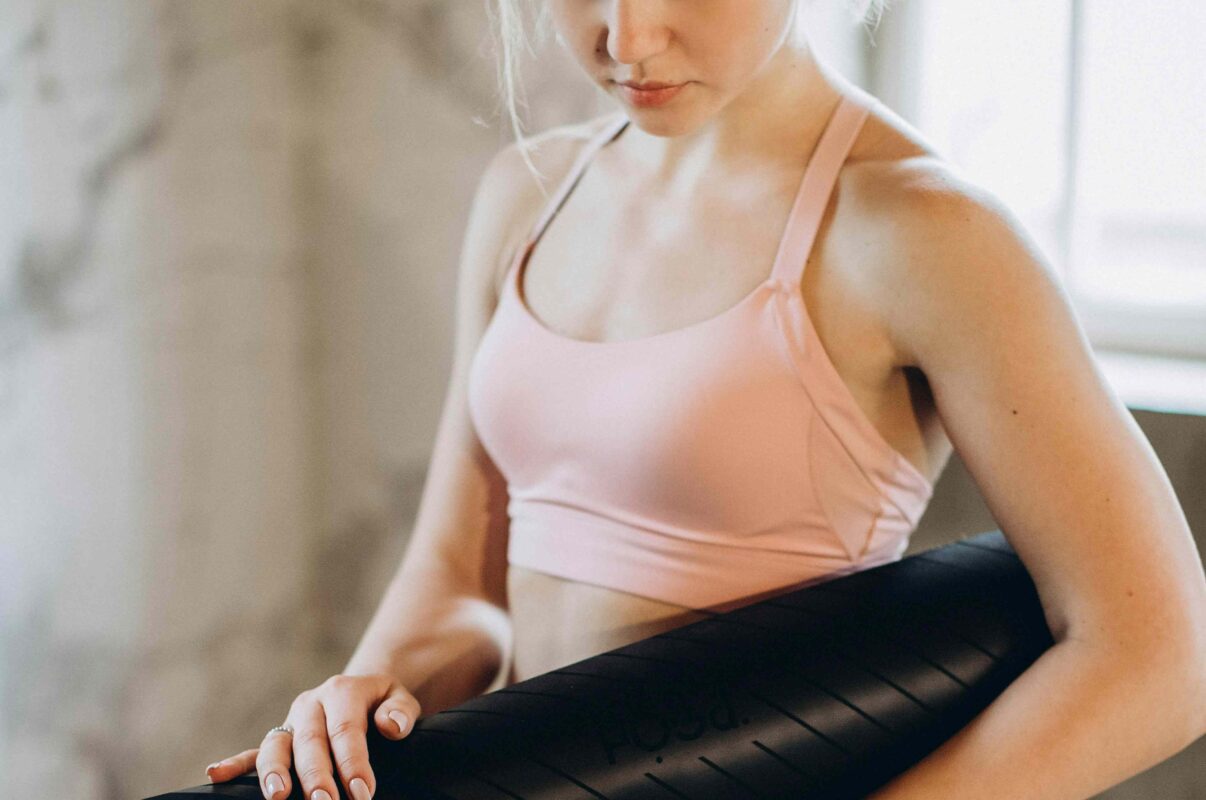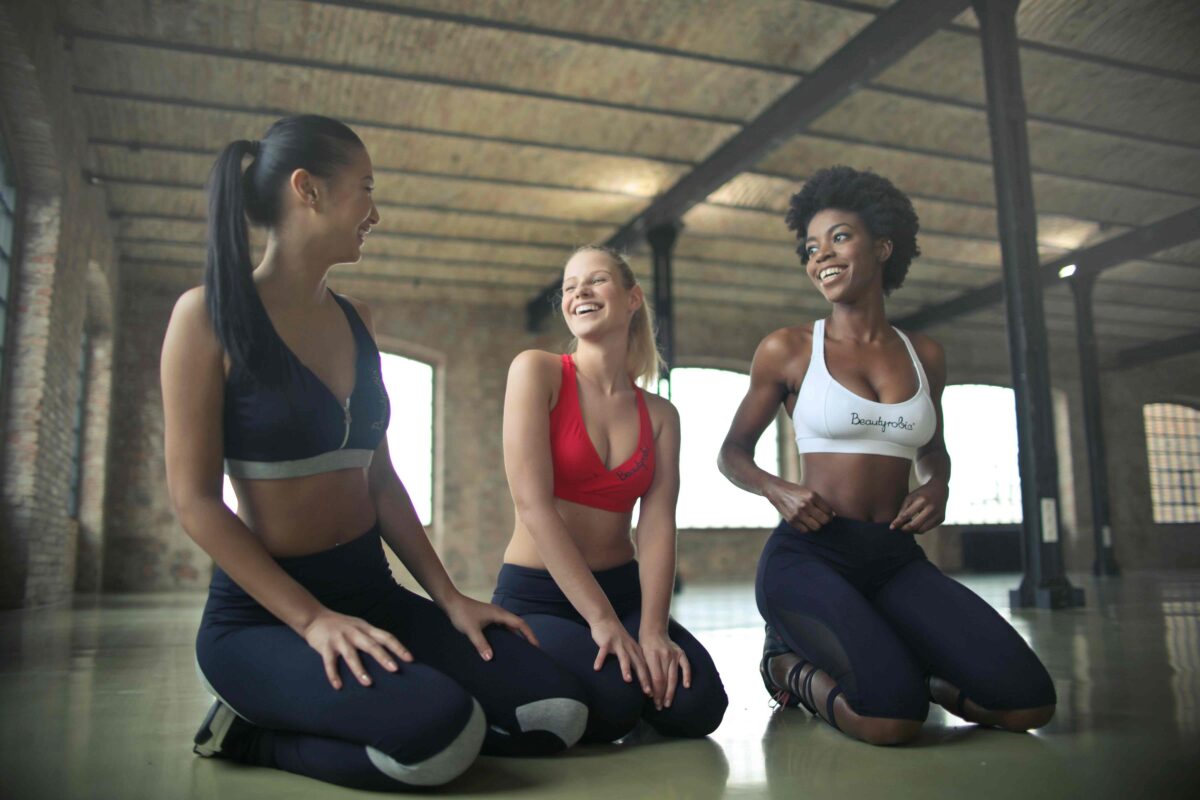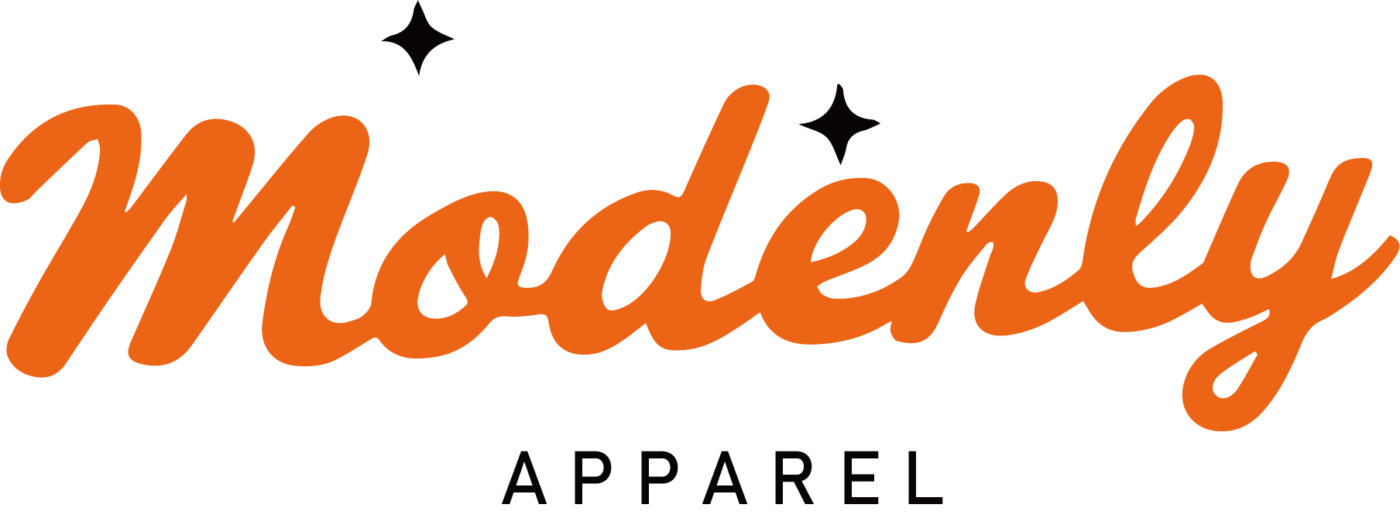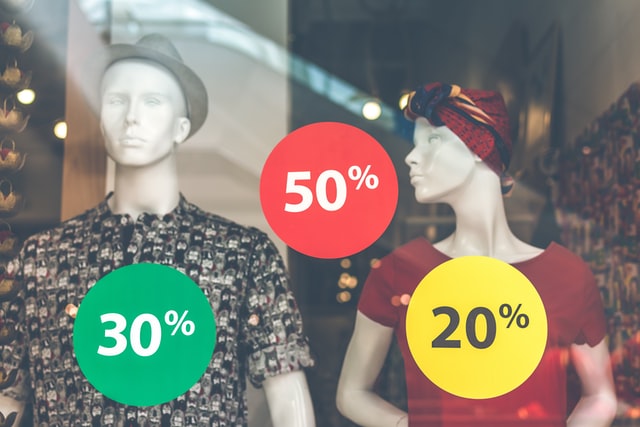消費者がファッション性と実用性の両方を兼ね備えた衣料品を求める中、アスレジャー・ビジネスは最近、大きな広がりを見せている。スポーツブラは、用事から激しい運動まで、現代的な服装の定番となっている。衣料品販売業者や再販業者、特に独自のカスタム・スポーツブラ・ラインの立ち上げや成長を望む業者にとって、この変化は大きなチャンスとなる。これらの商品を最高のフィット感と使い勝手にカスタマイズすることで、企業は新しい顧客を魅了し、現在の顧客と緊密な関係を築くことができる。
現代の顧客にアピールするカスタムスポーツブラを作ることは、基本的なデザインを超越している。ターゲットを絞ったサポート力、通気性の良い素材、柔軟なサイジングはすべて、ブランドの評判だけでなく売上にも大きく影響します。これらの重要な要素を知ることは、スポーツチームや店舗、企業のウェルネス・プログラムなどに新しい製品ラインを紹介するB2Bの専門家にとって絶対に欠かせません。この徹底的なガイドは、市場の期待に的確に応えるカスタムスポーツブラを開発、調達、提供するための重要な要素を指導します。

なぜフィット感と機能性を重視することがこれまで以上に重要なのか、競争の激しい市場でカスタムスポーツブラを成功させるための要素を調査し、サプライチェーンを最大限に活用するための実践的なアドバイスを提供します。ニッチを開拓しようとしている初心者ディストリビューターも、ベテランディストリビューターも、普通とは違うスポーツブラの成長市場を活用する方法を学ぶことができます。
カスタム・スポーツ・ブラの需要の高まり
健康、フィットネス、快適さを第一に考える消費者が、世界のスポーツウェア産業を爆発的に成長させてきた。一方で、すべてのスポーツブラが同じように作られているわけではありません。既製品では、さまざまな体型や特殊なパフォーマンス要求、独自のブランド・アイデンティティに対応できないことがあります。ここに、カスタム・スポーツブラのソリューションのチャンスがあるのです。
- テーラード・フィット:自分の体型や運動の程度に合ったスポーツブラを着用する必要性を、今日、より多くの顧客が理解している。フィット感が悪いと、パフォーマンスが損なわれ、快適さが低下し、怪我の原因にもなりかねません。カスタマイズすることで、カップサイズやバンドの長さを変えたり、クロージャーを変えたりすることができます。
- ニッチ・オーディエンス:カスタムスポーツブラは、ブランドのウェアを求めるヨガ教室から、カスタマイズされたギアを必要とする耐久レースイベントまで、特定の顧客層に適合することができる。販売業者は、このような特定のニーズに応えることで、基本的なソリューションを提供するだけのライバルに差をつけることができる。
- ブランド・アイデンティティ:特化されたデザインは、市場が賑わう中でブランドメッセージや価値をサポートすることができる。一貫したイメージを求めるスポーツチームでも、企業イベントでも、カスタムロゴ、カラーパレット、デザインの特徴は、実用的なアイテムを強力なブランディングツールに変えます。
- 長期的なロイヤルティ:実際にフィットし、性能の良いスポーツブラを発見した消費者は、ブランド・チャンピオンになり始める。そのロイヤリティを活用することで、ディストリビューターは次の商品への協力的な見込み客、好意的な口コミ、リピートビジネスを生み出すことができる。
こうした要素を知ることで、B2Bプレーヤーはニーズの高まりに対応したスポーツブラへの投資やマーケティングを行うことができる。特徴的な改良を早期に提供できるメーカーやパートナーを探すことは、競争上の優位性を獲得し、市場シェアを拡大することにつながる。
カスタムスポーツブラにフィット感を優先させることが不可欠な理由
フィット感は、おそらくどんなスポーツブラでも最も重要な要素である。エンドユーザーが不快に感じたり、サポート力がないと感じたりすれば、どんなに美しいデザインでも失敗してしまいます。フィット感を最優先したカスタムスポーツブラは、3つの大きな目標を達成するのに役立ちます:
- 不快感の軽減:ランニング、HIITセッション、ダンスなど、たくさんのアクティビティを取り入れることができます。フィットしていないブラジャーがもたらす不要な跳ね返り、肌荒れ、擦れは、顧客を急速に遠ざけてしまう。
- パフォーマンスの向上:フィット感のあるスポーツブラを着用することで、自信を持って動くことができる。ブラジャーは、無意味な動きを減らすことで姿勢と安定性を高め、運動効率を高めます。
- 包括性の推進:ワンサイズのデザインは、身体は千差万別であるという現実に反しています。カスタマイズは多様性を促進し、より幅広い製品を提供するというブランドの献身をサポートする。
精度の測定
徹底的な推奨を行うことで、顧客やエンドユーザーがサイズについて確信が持てない場合の不安を軽減することができます。例えば、正確なバストとアンダーバストのサイズは、ぴったりフィットするブラジャーと、返品されたり不要になったりするブラジャーの違いを生むことがあります。良い顧客体験を確保するには、サイズ表や「フィット・テスト」に関するメーカーとの協力が不可欠です。
調整可能エレメント
オーダーメイドのスポーツブラを作る際には、長めのサイジングに加えて、フレキシブルなクロージャー、取り外し可能なパッド、調節可能なストラップをお勧めします。これらの特徴は、マイクロアジャストを可能にすることで、さまざまな胴体の長さ、カップの形、快適さのレベルにフィットします。適切なフィット感が見つかれば、満足した消費者が新しい製品に切り替えることはほとんどないため、より良いリテンションが続きます。
高機能カスタムスポーツブラの素材選択
カスタムスポーツブラに使用される生地は、肌触り、汗への対応、着用寿命に大きく影響します。素材の品質を無視するB2Bの消費者は、製品が快適性、サポート性、耐久性などの顧客基準に満たない場合、信用を失う危険性がある。
吸湿性と発散性の比較
スポーツブラの成功は、水分コントロールによって定義できる。ポリエステルやナイロンなどの合成繊維は、吸湿発散技術を採用していることが多く、汗を素早く肌から蒸発させる。逆にコットンは水分を吸収するため、激しい運動では着用者が濡れてしまう。負荷の少ないスポーツやカジュアルウェアなら、綿混紡でも問題ないだろうが、より高い機能を求める消費者には、高機能の合成繊維を考えてほしい。
ストレッチとリカバリー
ライクラやスパンデックスといったブランド名で販売されることの多いエラスタンは、ダイナミックな動きに対応する伸縮性を備えている。しかし、スパンデックスの量は重要です。少なすぎるとサポートを妨げ、多すぎると通気性を制限してしまいます。理想的なバランスを見つけることで、ブラジャーは着用者を制限することなく、十分な着圧を保証します。
シームレスおよび接着仕上げ
テキスタイル技術の発展により、シームレスやボンディング加工が可能になり、肌を刺激する縫い目が少なくなった。高強度または長時間の着用には、これらの方法が特に魅力的に見える。B2B顧客、特にパフォーマンス志向の企業や高級フィットネス施設など、完璧なデザインを作れるメーカーと提携している可能性がある場合は、セールスポイントとして強調しましょう。
持続可能なオプション
持続可能性は、もはやニッチな傾向ではない。環境への影響を軽減するため、環境意識の高い企業は竹の混紡、オーガニックコットン、再生ポリエステル(rPET)などの素材を探しています。グリーン」テキスタイルをオーダーメイドのスポーツ・ブラ・ラインに取り入れることは、環境保護と倫理的調達が第一の関心事である市場にサービスを提供する企業にとって、大きな差別化になる。信頼性を確立し、本物であることを示すために、持続可能性を証明する証明書や記録を提供しましょう。
カスタムスポーツブラの優れたサポートをデザインする
フィット感と生地が基本ですが、サポートはカスタムスポーツブラが本来の機能を発揮することを保証する重要な要素です。ヨガのためのマイルドな着圧から、ランニングや集中的な有酸素運動のための高負荷の安定性まで、スポーツやアクティビティによって必要とされるサポートの程度は異なります。
インパクトのレベル
- ローインパクト:ストレッチ、ウォーキング、ピラティスなどのアクティビティに適している。一般的にコンプレッションは軽く、ストラップは細く、柔軟性と快適性に重点を置いている。
- 中程度のインパクト:サイクリング、ジムでの適度な運動、軽いジョギング向け。補強されたバンドと適度なカバレッジが特徴。
- 高いインパクト:ランニングやエアロビクスなど、激しい動きを伴う運動には欠かせない。高負荷用ブラジャーは、一般的にカップの設計がしっかりしており、ストラップの幅が広く、補強もしっかりしている。
製品パラメーターをこれらのカテゴリーに合わせることで、販売業者は幅広いエンドユーザーに対応することができる。小売業者は、在庫をセグメント化し、消費者を適切な製品に誘導する際に、この情報を重視します。
アンダーバンドとストラップ・エンジニアリング
サポートに欠かせないのは、ストラップとアンダーバンドの2つ。アンダーバンドは、ブラジャーが胴体の周りに固定されるのを助け、余分な跳ね返りを抑えます。エラスティックのように、形をキープし、伸びたときにスナップバックするものを選びましょう。ストラップは、レーサーバック、クリスクロス、ワイドセットのいずれであっても、肩の不快感を防ぐため、重さのバランスをとる必要があります。いくつかのストラップの組み合わせを提供することで、柔軟性を促進し、市場アピールを拡大する。
カップとライナー
着用者の中には、シェイプアップと慎み深さのために、カップ内蔵型や取り外し可能なパッドを好む人もいる。カップのデザインは、ブラジャーの本来の機能を補うものでなければなりません:
- カプセル化:安定感を求める方に人気です。
- 圧縮:生地が胸部を圧迫して固定する。よりシンプルな構造で、低・中負荷のトレーニングによく合う。
どちらのアプローチにも対応できる選択肢を用意することで、幅広い顧客の嗜好にアピールすることができる。
包括的なカスタムスポーツブラのフィットを作る
現代の衣料品会社は、今でもサイズの包括性に高い関心を寄せている。歴史的に、多くの消費者は典型的なサイズ範囲から除外されてきた。カスタム・スポーツ・ブラ・ブランドが本当に繁栄するためには、追加サイズを提供し、体型にフィットさせることが絶対に不可欠である。
拡張サイズの提供
幅広いバンドサイズとカップサイズを提供する販売業者は、適切なスポーツウェアを求める拡大する顧客層にアピールすることができる。例えば、プラスサイズの消費者は、選択肢が少ないことがあるため、彼らのニーズを満たすデザインを作ることは、ブランド・ロイヤルティと明確な競争力を築くのに役立つ。
適応機能
フロント・ジッパー、マグネット・スナップ、イージー・リリース・ストラップなど、適応性のあるパーツを取り入れることで、身体的な制限や手先の器用さに問題がある人にとっても、スポーツ・ブラジャーがより親しみやすいものになります。時には軽視されがちですが、このような入念なデザインディテールは、御社の創造性と包括性への献身の表れであり、専門店やリハビリ施設のような施設購買者にアピールすることができます。
地域間の一貫性
国際的に活動する場合は、地域によってサイズ規定が異なることに注意すること。多地域に対応したサイズ表示や一貫した採寸方法を用いることで、より明確になります。ウェブサイトや商品カタログに明確なサイズ情報を掲載することで、店舗はエンドユーザーに正しいカウンセリングを行うことができます。

カスタムスポーツブラの美学とブランディング
快適さとパフォーマンスが第一だが、カスタムスポーツブラの審美的な美しさを過小評価することはできない。企業は飽和状態の市場で目立ちたいのだから、注目を集めるための最も優れたアプローチのひとつは、印象的なデザインである。
カラーストーリーとパターン化
色は企業の本質を反映することも、季節のトレンドに従うこともできる。ヨガスタジオのラインや、エネルギー溢れるエアロビクスのブランドには、クライアントが喚起したい感情を補完する色、つまり落ち着いたパステルカラーや明るいネオンカラーのサンプルを提供しよう。シンプルな幾何学模様から大胆な主張のあるプリント柄まで、製品ライン全体で定期的に使用すれば、ブランドのシグネチャーになり得る。
ロゴと装飾
ロゴやスローガンを目立つように表示する場合、カスタムスポーツブラはマーケティングツールとして二重の役割を果たします。こんなアプローチを考えてみよう:
- スクリーン印刷:色数の少ないストレートなロゴに最適。
- 刺繍:高級感を演出するが、伸縮性の高い生地には合わないかもしれない。
- 熱伝達:細かいデザイン、写真的なデザインに有効だが、はがれないように慎重に貼る必要がある。
反射素材のような微妙なディテールは、屋外でのワークアウト中の視認性を高めると同時に、ブランドの独自性を強化することができます。プレミアム・ラインでは、シリコンやメタリックの転写が高級感を演出し、特にフィットネス・インフルエンサーやセレブ御用達ブランドにアピールします。
コーディネート・コレクション
レギンスやジャケット、タンクトップなどを組み合わせることで、B2Bの顧客にベーシックなスポーツブラの枠を超えた商品を提案することができます。まとまりのあるルックは、ブランド・ロイヤルティと複数アイテムの購買を促進する。また、店舗は「カプセル・コレクション」を開発することができ、これは特に季節の変わり目に売上を伸ばすことを意味するマーケティング戦略である。
高品質のカスタム・スポーツ・ブラの製造ワークフロー
安定した品質、タイムリーな納品、そしてハッピーなパートナーは、きちんと組織化された製造プロセスによって保証されます。プロトタイプから最終出荷まで、何が期待されるかを見込み顧客が正確に知ることができるよう、製造工程を説明してください。
テクニカル・パックとサンプリング
デザインチームやテクニカルチームと協力し、詳細なテクニカルパックを作成する。含む:
- 正確な寸法とサイズスペック
- 生地のブレンドとサプライヤーの紹介
- ステッチの種類、縫い代、金具の詳細
- ロゴやパターンの配置ガイド
承認されたら、サンプルの段階へ。量産前にデザインやフィットの問題を発見するための重要な第一歩は、実際の環境でサンプルを検査するよう顧客に促すことです。少人数のウェア・テスターからコメントをもらうことは、完成品の改善に大いに役立つ。
材料の品質チェックと調達
環境に配慮した糸を選ぶにせよ、専門工場から合成繊維を購入するにせよ、認証や試験結果(伸縮性、堅牢度など)を注意深く記録しておくこと。企業間取引の顧客には、製品がどこから来たのかを伝えましょう。定期的な抜き取り検査を行うことで、色や伸縮性の違いを把握し、下流での不測の事態を最小限に抑えることができます。
バルク生産とロジスティクス
サンプルの最終確認が取れ次第、本格的な生産を開始する。材料不足や出荷の遅れを考慮したカレンダーを作成する。頻繁に更新することで、顧客は常に最新の情報を得ることができます。ディストリビューターがビジネスを継続するために優先すべきことは、信頼性とコミュニケーションである。
最終検査と梱包
完成したスポーツブラは、サイズ、縫い目、ブランドの詳細が統一されているかチェックする。ブランドのポリ袋、生分解性のラップ、洗練された箱など、適切な包装をすることで、認知価値を高め、移動中に商品を保護することができます。店舗にブラジャーの見せ方や保管方法を指示し、品質を維持しましょう。
顧客満足の確保と返品の最小化
衣料品ビジネスでは、サイズや着け心地の問題による返品が大きな問題となります。パーソナライズド・スポーツブラの販売業者にとって、返品率の低減は利益率の向上と顧客ロイヤリティの向上を意味する。
透明なサイズガイドとサポート
明確なサイズ表の用語は、不確実性を減らすのに役立つ。e-コマース・ベンダーにとって優れた支援となるのが、徹底した採寸ガイドラインや簡単なハウ・トゥ・フィットのビデオである。このような資料を商品ページに目立つように表示するよう顧客に促し、見込み違いの可能性を低くしましょう。
品質保証と摩耗試験
すべての製造工程が均一であることを確認する、強力なQAシステムに投資する。新しいラインは、店頭やオンラインショップに並ぶ前に、履き心地をテストするよう顧客に伝える。このようなわずかな行動により、履き心地や伸縮性、ストラップの不具合に起因する返品を大幅に減らすことができる。
迅速なカスタマーサービス
最高の製品にも散発的な問題はある。販売後のサポートは、解決策を重視し、効率的なものにしましょう。簡単な返品規定、クレジット券、迅速な交換は、消費者の信頼を築きます。誤植や縫製不良など、問題が発生した場合は、迅速かつプロフェッショナルに対応し、好意を維持する。
カスタムスポーツブラの今後の動向
カスタムスポーツブラの市場は、消費者がますます自分の価値観やパフォーマンス目標に合った商品を求めるようになり、その勢いは衰えていない。発展するトレンドを監視することは、戦略的選択を導くのに役立つ:
- スマート・ファブリックス:織物センサーと温度調節素材における革新は、技術に精通したセグメントにおけるスポーツブラジャーの差別化を間もなく可能にするだろう。
- 拡張現実(AR)フィッティング:バーチャル試着室やARアプリは、ほぼ正確なサイズプレビューを提供することで、返品を減らすことができる。
- 超パーソナライゼーション:ストラップのスタイルから内張りに至るまで、購入者が自由に選べるオンデマンド・カスタマイゼーションをすでに提供しているブランドもある。このような直接的な関与はブランド・ロイヤルティを育み、プレミアム価格を要求することができる。
- 循環型経済への取り組み:廃棄物の削減と責任ある生産サイクルを強調し、使用済みスポーツブラの引き取りやリサイクルプログラムを要求するブランドが増えることを期待する。
このような変化を予測することで、B2Bビジネスは着実な拡大を遂げることができる。革新性、包括性、環境に配慮した方法を取り入れることで、現代の消費者は前向きなサプライヤーとして共感してくれる。
よくあるご質問
- 一般的なスポーツブラではなく、オーダーメイドのスポーツブラにこだわる理由は?
多くの場合、一般的なスポーツブラは特定の体型やブランド名を無視している。カスタムメイドの代替品は、正確なフィット感、特徴的なデザイン部品、ブランドに沿った美学を可能にすることで、カスタマイズされたソリューションを求めるより多くの顧客層を引き寄せます。
- 高機能カスタムスポーツブラに適した生地はどのように選べばよいですか?
伸縮性を求めるなら、ポリエステルやナイロンのような吸湿発散性のある合成繊維とスパンデックスの組み合わせが最優先。最高の着心地を得るには、シームレス構造やボンディング構造も考慮に入れよう。環境への配慮をセールスポイントにするなら、rPETを含むリサイクル素材に注目しよう。
- カスタム・スポーツ・ブラの衝撃レベルは?
想定する読者層に応じて、低、中、高インパクトのバリエーションを用意することで、商品の市場吸引力が高まります。各デザインを用途別に明確に表示することで、店舗は顧客を適切に誘導することができる。
- サイズアップは本当に必要ですか?
間違いなく。サイズの包括性はさらに重要になってきている。バンドやカップのサイズを幅広くカバーすること、あるいは変更可能な要素を提供することで、従来のデザインでは軽視されがちな市場にアピールすることができます。それはまた、顧客の喜びとアクセシビリティへの献身を示すものでもある。
- カスタムスポーツブラの返品率を下げるには?
サイズ表を正直に共有し、徹底的な着用テストを行い、品質保証の基準を厳しく保つ。また、明確なアフターサポートと手間のかからない交換方法の選択肢は、消費者の信頼につながり、好ましくないレビューや返品が発生する可能性を減らす。
結論
成功するカスタム・スポーツ・ブラ・ラインのデザインと流通は、フィット感、機能、そして入念なブランディングの接合点から始まる。衣料品の卸売業者や再販業者は、変化する消費者の需要に取り組む方法も変える。包括的なサイジング、高級素材、サポート構造に高い優先順位を与えることで、体型や活動レベルに関係なく、最終製品がユーザーの実際のニーズを満たすことが保証される。
このような卓越性の強調は、エンドユーザーのニーズにとどまらず、小売パートナー、フィットネスセンター、そして既製品のソリューションでは不十分であることを認識している企業クライアントの間での地位を強化します。混雑した市場において、持続可能性、巧みなデザイン、強力な製造技術を盛り込むことで、ユニークな存在となります。さらに、絶え間ない品質は、紹介、リターン・ビジネス、協力的な発展の基礎を築きます。
パフォーマンスを重視し、フィット感の高いスポーツブラで製品ラインを向上させる準備が整いましたら、以下の専門知識とリソースの活用をご検討ください。 モデンドットコム.当社の専門チームは、機能性とスタイルを融合させたカスタムアクティブウェアを作るニュアンスを理解しています。

